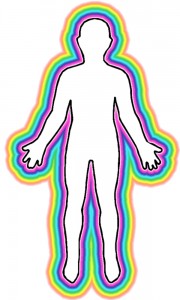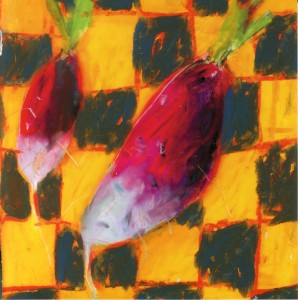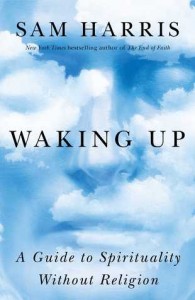We Are Not Our Hair
 Our Dharma Book Group meets tonight and we are starting to discuss Chapter 10 of Joseph Goldstein’s new book, Mindfulness: A Practical Guide to Awakening. This is the chapter that includes some of the less-common meditations on the body, including the practice of contemplating its anatomical parts.
Our Dharma Book Group meets tonight and we are starting to discuss Chapter 10 of Joseph Goldstein’s new book, Mindfulness: A Practical Guide to Awakening. This is the chapter that includes some of the less-common meditations on the body, including the practice of contemplating its anatomical parts.
“In this body there are head-hairs, body-hairs, nails, teeth, skin, flesh, sinews, bones, bone-marrow, kidneys, heart, liver, diaphragm, spleen, lungs, bowels, mesentery, contents of the stomach, feces, bile, phlegm, pus, blood, sweat, fat, tears, grease, spittle, snot, oil of the joints, and urine.”
Yuck. Right?
But really, it’s just the truth. This body, which I think of so strongly as ME, is really NOT me.
Which is good news.
I am NOT my hair, or bones, bowels, blood, or any of the other “stuff” that make up this body. Which, of course, I know. I am clearly more than my body. I know that.
But I still kind of think of this body as MINE.
That’s not really true either, because I can’t control “my” body — I can’t tell it to grow or not grow, to age or not age, to be sick or not be sick. I can have some effect on the way it grows or ages, etc, but really, not that much. It does what it does in accordance with the laws of nature. Clearly not in accordance with my desires or wishes.
Which is not exactly good news.
But it’s the truth. This is the way things are.
And it’s always better to be dealing with what IS, than to be thinking — and acting — as if thing were other than they actually are.
Just Beginning or Beginning Again
 I had a friend ask me yesterday to recommend a good, basic talk on meditation and I couldn’t come up with just one, but I did find a separate page on Dharma Seed, under the title Introduction to Meditation, with four introductory talks by four terrific teachers. How cool!
I had a friend ask me yesterday to recommend a good, basic talk on meditation and I couldn’t come up with just one, but I did find a separate page on Dharma Seed, under the title Introduction to Meditation, with four introductory talks by four terrific teachers. How cool!
And then I thought it would be a good idea to have these talks “at the ready” — not only for the next time someone is interested in beginning meditation, but also for all those times when the practice seems to get kind of “stale” or I get confused or (even more likely) I find myself thinking that I already know it all. (A major red flag!)
Here are the talks:
(1) Introduction to Meditation Practice, by Steve Armstrong
(2) What Changes Us in Spiritual Life, by Jack Kornfield
“The long and winding road and how the unexpected offers profound teachings.”
(3) Thoughts on Practice and Why We Do It, by Pascal Auclair
(4) Introduction to Meditation, by Thanissara
“A cultivated mind: a cause for happiness. Samadhi: a gathered mind. Entry into the first foundation of mindfulness.”
“There Is A Body”
 The first part of the annual 3-month retreat has started at IMS (Insight Meditation Society in Barre, MA) and I have to admit I’m feeling a bit wistful. This time last year I was there and I remember the excitement, the curiosity, the sense of embarking on an important inner journey. So last night I started listening to this year’s talks, which are now beginning to appear on Dharma Seed. (Click here.)
The first part of the annual 3-month retreat has started at IMS (Insight Meditation Society in Barre, MA) and I have to admit I’m feeling a bit wistful. This time last year I was there and I remember the excitement, the curiosity, the sense of embarking on an important inner journey. So last night I started listening to this year’s talks, which are now beginning to appear on Dharma Seed. (Click here.)
If you don’t have time to listen to them all (smile), you might consider just listening to the Opening Morning Instructions given by Joseph Goldstein. The instructions are similar to the ones he gave last year — offering an Open Awareness technique, using this line from the refrain in the Satipatthana Sutta:
Mindfulness that “there is a body” is established in him to the extent necessary for bare knowledge and continuous mindfulness.
Don’t be put off by the length of the “tape,” which runs just under 43 minutes. Joseph’s instructions are given during the first 10 minutes. The rest of the tape is silence. (Click here.)
Never! Always! Everyone!
 Today I want to point you to an excellent blog post by Ajahn Sucitto, titled Sex, Sin and the Inner Tyrant, in which he talks about….well, sex…and the terrible things that result when the “Inner Tyrant….is supported by, or morphs into, the Outer Tyrant of political or religious repression.” (His post was written after teaching a retreat in Ireland, so the grim accounts of the Magdalene Laundries are particularly on his mind.)
Today I want to point you to an excellent blog post by Ajahn Sucitto, titled Sex, Sin and the Inner Tyrant, in which he talks about….well, sex…and the terrible things that result when the “Inner Tyrant….is supported by, or morphs into, the Outer Tyrant of political or religious repression.” (His post was written after teaching a retreat in Ireland, so the grim accounts of the Magdalene Laundries are particularly on his mind.)
On the “Inner Tyrant”:
Take note of the tyrannical voice: “never,” “always,” “the rest of your life,” and “everyone thinks” are standard references. The Tyrant always presents perceptions and impressions as solid truth, and based on that, operates in terms of black-and-white realities, prophesies and judgements. Justice and “what they/I deserve” are common slogans, messages that blaze through the mind with such conviction that we never examine their logic — and how they sour us.
Once infected by the Tyrant, the mind can justify any action; particularly a wrathful response to perceived evil. Hence Crusades, missions, jihads, witch-hunts pogroms, torture and jails. The Tyrant often masquerades as the Just God.
Justice? It’s too often a mask for self-interest and revenge…….
Meditation offers a resolution of the conundrum of passion. All compulsions grab the heart and deprive us of freedom; without meditation, people just use the Tyrant of blame, repression and punishment to ward off the Tyrant of compulsive desire. When we’re thrown between these two forces, we lose self-respect, empathy and clear understanding.
But when we operate in terms of present-moment experience, and a clear and empathic approach to meeting the energies of fear, rage and desire as they happen to us, then there’s a way out of the tyranny. The energy of desire can then be held and correctly channeled not into prophesies or assumptions of what others think or God wills, but into the full fruition of the heart.
***
Click here to read the full post on Ajahn Sucitto’s blog.
How to Change the Channel
 Last night one of my Dharma buddies and I listened to the opening talk given by Akincano Marc Weber at the month-long retreat held this past August at the Forest Refuge. We’d already listened to a few of the talks from that retreat, and they were so good, that now we’ve decides to listen to all of them, in the order they were given.
Last night one of my Dharma buddies and I listened to the opening talk given by Akincano Marc Weber at the month-long retreat held this past August at the Forest Refuge. We’d already listened to a few of the talks from that retreat, and they were so good, that now we’ve decides to listen to all of them, in the order they were given.
The talk last night was a fresh take on the well-known Satipatthana Sutta (also known as the Discourse on the Four Foundations of Mindfulness), which is also the basis of Joseph Goldstein’s new book, Mindfulness: A Practical Guide to Awakening.
In this talk, Akincano looks at the four Foundations of Mindfulness as if they were four “channels” — ways in which we experience the events in our lives — and proposes a way to use them “not as meditation exercises, but as a model of human experience.”
These four Foundations/Channels can be understood as “somatic awareness” (body), “hedonic awareness” (vedana, or feeling tone), “affective awareness” (emotions, moods, and other mind states) and “cognitive awareness” (dhammas, or the mental activities of thoughts, concepts, images and ideas).
I found it to be quite a fascinating — and helpful — way of looking at these teachings. Click here to listen.
Dharma Kitchen: Raw-Corn and Radish Salad
 I love the good, fresh, simple-but-flavorful food they serve at Spirit Rock and at IMS (Insight Meditation Society), but my all-time favorite retreat food comes from the Garrison Institute kitchen. Here’s a sample from their cookbook:
I love the good, fresh, simple-but-flavorful food they serve at Spirit Rock and at IMS (Insight Meditation Society), but my all-time favorite retreat food comes from the Garrison Institute kitchen. Here’s a sample from their cookbook:
Mixed Radish and Raw-Corn Salad (serves 4-6)
4 ears fresh sweet corn
2 bunches small radishes, cleaned and cut into bite-sized pieces
3 Tbsp. good olive oil
2 Tbsp. lemon or lime juice
Salt & black pepper
1 tsp. fresh thyme leaves
To remove the kernels from the cobs, use a sharp knife and hold the cob inside a mixing bowl as you shave.
Combine the radishes with the corn kernels and season to taste with oil, citrus juice, salt, pepper, and thyme.
Enjoy!
How to Breathe
 I’ve been interested in learning qigong ever since reading Ajahn Sucitto’s blog post from March of this year, titled Standing Like a Tree, Breathing Like a Buddha, and then attending his retreat in April, where he guided us in deep, full, Whole Body Breathing and led us in extended Standing Meditation practice every morning at the end of the first sit.
I’ve been interested in learning qigong ever since reading Ajahn Sucitto’s blog post from March of this year, titled Standing Like a Tree, Breathing Like a Buddha, and then attending his retreat in April, where he guided us in deep, full, Whole Body Breathing and led us in extended Standing Meditation practice every morning at the end of the first sit.
But the qigong class I found while I was staying in Chapel Hill didn’t place particular emphasis on breathing — or on standing — so I sort of forgot that that was really the fundamental instruction/practice I had been looking for.
But then I came back to St. Louis and started looking around, and what do you know — there’s a Qigong Breathing (and Standing) class right here! It’s at a place called Bamboo Studio, 3227 Magnolia, near Tower Grove Park.
So I went last night and it was just like what we practiced with Ajahn Sucitto….except that in addition to the Standing practice and Full Belly Breathing (which, in this case, we did on the floor), we also did some breath-and-movement exercises while sitting in a chair.
It was very interesting. Relaxing, but not at all passive. And quite satisfying.
I’ll be back for more!
Not Just “Watching”
 Meditators are often instructed to “watch” or “observe” their breath….or emotions, body sensations, mental states, etc. But using a visual metaphor for mental investigation can have an unconscious effect on the type of attention we bring to our meditation object. When we are “sniffing things out,” for example, there’s a very different feel than when we are “looking at” something. And the same goes for “listening to,” “tasting,” and “touching.
Meditators are often instructed to “watch” or “observe” their breath….or emotions, body sensations, mental states, etc. But using a visual metaphor for mental investigation can have an unconscious effect on the type of attention we bring to our meditation object. When we are “sniffing things out,” for example, there’s a very different feel than when we are “looking at” something. And the same goes for “listening to,” “tasting,” and “touching.
This was brought very beautifully to my attention last night as I listened to a wonderful little talk by Akincano (who has recently become of one my all-time favorites on DharmaSeed). In this talk — which is only 26 minutes long — he also gives three very helpful ways to approach an intimate investigation into our thoughts, emotions and other mind-states (cittanupassana). Click here to listen.
Buddhist Atheist
 I was very impressed by the recent interview with Sam Harris in the philosophy column of the New York Times, and as a result, I’m now reading his new book, Waking Up: A Guide to Spirituality Without Religion.
I was very impressed by the recent interview with Sam Harris in the philosophy column of the New York Times, and as a result, I’m now reading his new book, Waking Up: A Guide to Spirituality Without Religion.
I understand that Harris is an atheist. But he’s clearly a Buddhist atheist. (There are quite a lot of us.)
The way this book is organized should give you a hint:
Chapter 1: Spirituality
The Search for Happiness
Religion, East and West
Mindfulness
The Truth of Suffering
Enlightenment
Chapter 2: The Mystery of Consciousness
The Mind Divided
Structure and Function
Are Our Minds Already Split?
Conscious and Unconscious Processing in the Brain
Consciousness Is What Matters
Chapter 3: The Riddle of the Self
What Are We Calling “I”?
Consciousness With our Self
Lost in Thought
The Challenge of Studying the Self
Penetrating the Illusion
Chapter 4: Meditation
Gradual versus Sudden Realization
Dzogchen: Taking the Goal as the Path
Having No Head
The Paradox of Acceptance
Chapter 5: Gurus, Death, Drugs, and Other Puzzles
Mind on the Brink of Death
The Spiritual Uses of Pharmacology
Conclusion
***
I’m just halfway into Chapter 1, but so far I like it a lot.
Here’s a sample quote:
Our world is dangerously riven by religious doctrines that all educated people should condemn, and yet there is more to understanding the human condition than science and secular culture generally admit.
More to come.
Always Stillness, Always Movement
 Today’s post is prompted by an interesting email conversation I had the other day with one of my Dharma buddies (thanks, Lori) about the practice of turning one’s attention to the open, spacious, stillness of mind. If you are at all interested in this practice, listen to the last 5 minutes of this talk given by Phillip Moffitt at the recent Concentration Retreat.
Today’s post is prompted by an interesting email conversation I had the other day with one of my Dharma buddies (thanks, Lori) about the practice of turning one’s attention to the open, spacious, stillness of mind. If you are at all interested in this practice, listen to the last 5 minutes of this talk given by Phillip Moffitt at the recent Concentration Retreat.
“There is always stillness,” Phillip says, “and there is always movement.”
T.S. Eliot says it like this:
At the still point of the turning world. Neither flesh nor fleshless;
Neither from not towards; at the still point, there the dance
is,
But neither arrest nor movement. And do not call it fixity,
Where past and future are gathered. Neither movement
from nor towards,
Neither ascent nor decline. Except for the point, the still
point,
There would be no dance, and there is only the dance.
— from Burnt Norton, I, Four Quartets
